A dog is man’s best friend, and best friends share their deepest secrets and most treasured possessions.
Indeed, most pet parents share a lot with their canine friends, ranging from playing the game of fetch and swimming together to cuddling on the couch while enjoying a great animal documentary film.
Some dog owners even don’t mind sleeping on the same bed with their dogs, which is mostly okay.
If anything, experts encourage pet parents to spend as much time as possible with their furry friends. Not only does that help to keep the dog mentally and physically stimulated, but it’s also instrumental in developing unbreakable bonds between the dog and its owner.
But when it comes to feeding your pooch, you should exercise a bit of caution. There are plenty of human food items that we readily offer to our dogs without due regard to how the food might impact their health.
A case in point is bacon. And as a loving dog owner, you might be wondering, can my dog eat bacon?
The answer to that question can either be a yes or a no, depending on how the food is prepared and served. While dogs are carnivores and will readily enjoy bacon, the food is usually laden with preservatives and other ingredients that might cause your dog more harm than good.
So, before you offer bacon to your dog, you should conduct your due diligence.
Read on as we explore everything there is to know about dogs and bacon.
More About Bacon
Is bacon bad for dogs?
As we’ve already mentioned, that depends on a lot of factors, mostly the ingredients used.
But before we delve deeper into exploring the common ingredients used in bacon and how they could affect your dog’s health, let’s learn more about what this food is.
Bacon is essentially salt-cured pork belly. So, that already speaks volumes about the content of fat that the food contains.
However, not all bacon is derived from pork belly. Increasing awareness of the dangers of high-fat foods has seen many people reduce their intake of fatty foods, such as bacon.
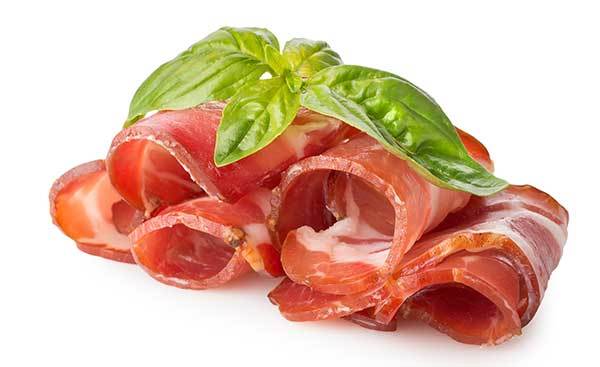
As such, bacon producers responded by reducing the amount of bacon derived from pork belly, and instead, focused on bacon that’s made from other parts of pork.
Some producers went as far as shunning pork altogether. That’s why nowadays, we even have bacon that’s made from turkey, chicken, beef, or lamb.
But regardless of where bacon meat is sourced from, the method of preparation is more or less the same. First, the food is cured using preservatives, such as nitrites and brine.
The preservatives are added to prevent the growth of potentially harmful bacteria. Brine, which is essentially a concentrated salt solution, also enhances the taste and flavor of bacon.
After curing the food, flavoring and spices are added before it’s cooked over a convection oven or smoked using traditional smoking methods.
Whether smoked or cooked over a convection oven, it’s important to note that this bacon is usually not ready for consumption yet.
For the food to be considered safe for consumption, you must first pan-fry or boil it. And when your bacon is finally ready, you can consider adding toppings before enjoying this delicious treat.
Dogs And Bacon – Why Your Dog Might Love It!
Dogs are carnivorous animals, which implies that they rely heavily on diets of animal proteins.
And since bacon is essentially animal protein, the food is loaded with nutritional elements that your dog might benefit from.
Examples include selenium, phosphorus, iron, zinc, potassium, magnesium, as well as B1, B2, B3, B5, B6, and B12.
Based on its rich abundance of essential minerals and vitamins, bacon might just be one of the best human foods to feed your pooch. But sadly, it isn’t, and the following section shall explain why.
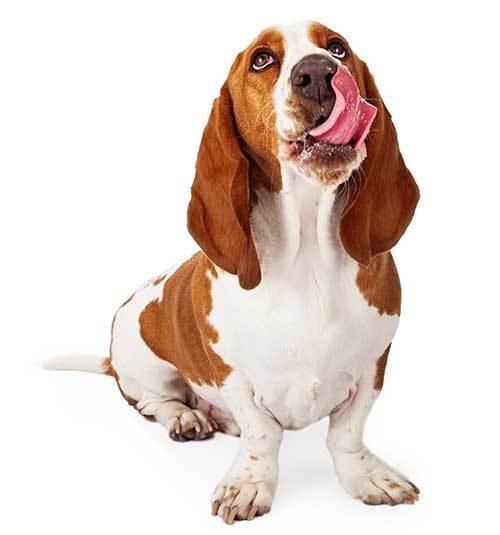
Potential Health Risks Associated With Bacon for Dogs
Can bacon kill a dog?
Without meaning to preempt on that, bacon can certainly kill a dog. Of course, your dog may not die instantly.
Instead, death comes slowly when you don’t take any urgent measures to address the many complications that the dog might experience from eating bacon.
The following is a roundup of the top health concerns associated with feeding bacon to dogs.
1. Method of Preparation
Even before factoring in its ingredients, the method used in the preparation of bacon makes it an unhealthy food for dogs.
As we’ve just highlighted, the food is heated over a convection oven or smoked. Either of these methods is discouraged for various reasons, the most common reason being the temperature conditions under which the bacon is cooked.
Cooking bacon over an oven means that the meat is subjected to ultra-high temperature conditions.

Generally, experts encourage cooking food under high-temperature conditions, as that helps to destroy harmful pathogens. But it also comes with certain drawbacks.
First, many of the nutrients are lost. And secondly, high-temperature conditions may oxidize some of the heavy metals that are present in the atmosphere, allowing them to combine with the bacon.
Feeding bacon that’s laden with toxic metals to your dog could present severe health complications, including risks of developing heart disease, obesity, diabetes, as well as lung, liver, and colon cancer.
2. Potentially-toxic Preservatives
Like most processed foods, preservatives, such as nitrites, are added to bacon to elongate its shelf life.
Numerous scientific studies associate nitrites with the development of cancerous cells. So, along with heavy metals, preservatives significantly increase your dog’s susceptibility to cancer.
- Real meat is the number 1 ingredient in our bacon flavored treats. Big. bacony flavor in small dog treats made with small dogs in mind and made to…
- Beggin’ Strips for dogs made with real bacon. Only 7 calories per Purina Beggin’ Fun Size strip
- Tempting texture of dog strips is easy to chew. Beggin’ Fun Size strips provide the ultimate treat experience
Last update on 2025-01-02 / Affiliate links / Images from Amazon Product Advertising API
3. Brine Is Toxic Too
If you’ve ever been so curious as to taste regular pet foods, you must have realized that the salt concentration in these foods is significantly lower than that of human foods.
That’s because unlike us, our pets can make do with very little amounts of salt in their diets.

If your pooch consumes salt-laden foods, the first signs you might observe are frequent drinking and frequent urination.
At first glance, these symptoms may not seem like much. But unknown to you, sodium ion poisoning might be taking a toll in the system of your canine friend. And if not treated with the urgency it deserves, your dog could die.
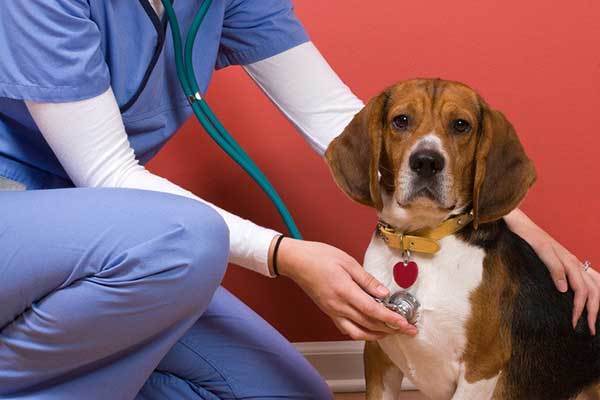
So, monitor the dog closely and observe if it also develops the following symptoms;





Besides these perceivable signs, excess salt content in your dog’s body comes with other complications, including twisting of the intestine and obstructive pulmonary disease.
4. High Fat Content
Bacon is one of the high-fat foods out there.
Research indicates that one piece of bacon contains over 40% of unsaturated fat, 10% of polyunsaturated fat, and high amounts of cholesterol.
By offering such a fatty food to your dog, you’ll be exposing your canine friend to weight-related health concerns, such as obesity and diabetes.
Another notable danger of bacon for dogs is that the high-fat content in the food could lead to blockage in your canine’s blood vessels. That could result in elevated blood pressure and irregular pulses, all of which are risk factors for heart disease.

Consuming fatty foods is also linked to pancreatitis, which refers to the inflammation of the pancreas. The pancreas is an organ that plays a significant role in the secretion of various digestive enzymes.
When those functions are inhibited, the enzymes are not released into the digestive tract. Instead, they remain trapped inside the pancreas, where they digest the fat and proteins found within the organ. That’s what results in the inflammation.
Some of the common signs of pancreatitis include;



Though the condition is treatable, it could set you back hundreds of dollars. Besides, it’s exceedingly painful for the dog.
Another commonly-overlooked danger of bacon for dogs is choking. Unlike us, our canine friends don’t take their time to masticate food.
Instead, they gobble it down. The shape and size of bacon makes the food appear deceptively small. As such, the dog might be tempted to swallow it whole, leading to choking.
Raw Vs. Cooked Bacon – Which One Is Better?
From the above sections, it’s safe to admit that bacon comes with more drawbacks than drawcards. And you’re better off not feeding it to your dog.
But some dog owners may find the urge to slide some bacon slices to their canine friends too strong to overcome.
In such cases, the next concern would be whether to offer cooked or raw bacon to dogs. So, can dogs eat raw bacon?
Before man domesticated dogs thousands of years ago, the animals preferred their meals raw (not like they had a choice anyway).
However, after domestication, most dogs adapted to eating cooked meals. So, your dog might prefer cooked bacon to raw ones.
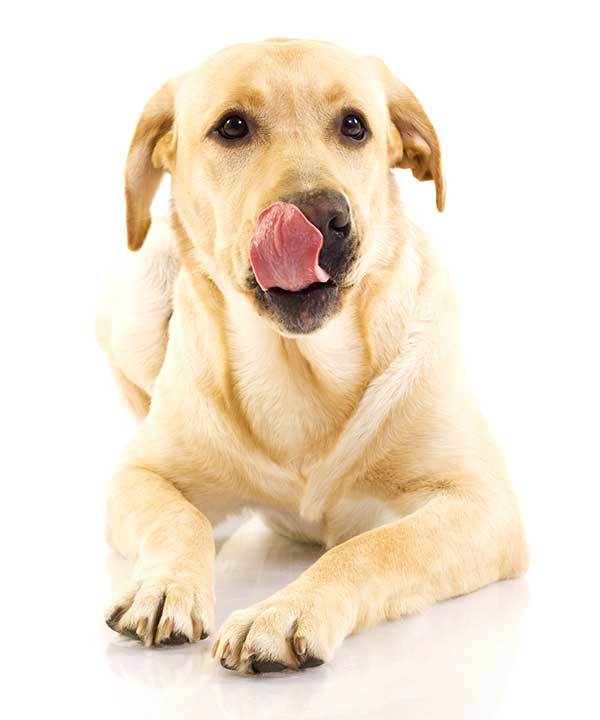
Besides adaptability, there are additional benefits to feeding your dog cooked bacon.
First, cooking bacon destroys the potentially-harmful bacteria that might be present in the food. These bacteria are associated with food poisoning.
In addition, cooking makes the meat softer, hence easier for your dog to chew and swallow. That reduces the risks of choking.
But since there are numerous methods of cooking, you might also be wondering what the best way to cook bacon for dogs is.
Generally, you should boil the food in plain water, at an internal temperature of about 140° F.
According to experts, 140° F is the ideal temperature required to destroy all the pathogens that could be present in bacon. When it’s done, serve the bacon to your dog plain. Avoid adding any spices or seasonings.

There’s also the question of the meat source, and some dog owners might be wondering, can dogs eat turkey bacon?
Turkey bacon is preferred to pork bacon, as it contains lower fat content compared to pork bacon.
However, it makes no difference if the meat is subjected through the regular curing processes, as it would have been contaminated with lots of ingredients that make it less safe for dogs.
Other Frequently Asked Questions about Bacon for Dogs
Can dogs eat bacon grease?
Just as the name suggests, bacon grease is loaded with higher fat content than regular bacon. And having examined the numerous adverse effects of fatty foods for dogs, it would be illogical to offer bacon grease to your pooch.
The following are some of the facts about bacon grease that makes it particularly harmful for dogs;

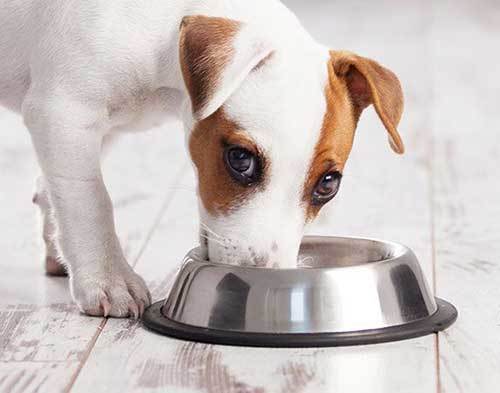



Can dogs eat bacon bits?
Bacon bits aren’t safe for dogs because they contain even higher amounts of salt and other ingredients that are deemed to be toxic for dogs.
- Contains three (3) 60 ounce boxes of small dog biscuits in 4 gravy-basted flavors: beef, chicken, liver and bacon
- Deliciously crunchy dog treats coated in joy (a.k.a. gravy goodness)
- Prepared with care and colored by natural ingredients
Last update on 2025-01-10 / Affiliate links / Images from Amazon Product Advertising API
Can dogs eat eggs and bacon?
This is like a double trouble kind of situation. Eggs may be nutritious, alright. However, since their main method of preparation is frying, that means cooked eggs are laden with fat.
Now, factor in the high fat content in bacon, and you have two foods that might be very toxic for your dog.
How Much Bacon Can Dogs Eat?
If you occasionally offer bacon to dogs, one of your most frequently asked questions is how much bacon can a dog have?
As you might expect, there’s no hard and fast rule on how many bacons you can offer to your pooch. That depends on a lot of factors, such as the age, size, and weight of the dog.
It also depends on whether you’re trying to introduce bacon to your dog for the first time or if the canine has already developed a taste for the food.
According to vets, a small dog might do fine with a ¼ strip of bacon, while a larger dog might be okay eating ½ strip of bacon.
However, what makes all the difference is the frequency. It doesn’t matter the breed or size of your dog, always offer bacon to the dog only as an occasional treat.
- SUPERFOOD INGREDIENTS – This dog bone broth is crafted with carrots, sweet potatoes, apples, pumpkin, and ginger to help promote gut health and…
- SLOW-SIMMERED BONE BROTH – Your pup will love the rich aroma and taste of this slow-simmered bone broth that promotes healthy hydration and provide…
- NATURALLY OCCURRING COLLAGEN – Rich in natural collagen from beef bones, collagen is an essential protein that promotes healthy skin and nails while…
Last update on 2025-01-13 / Affiliate links / Images from Amazon Product Advertising API
So, Can Dogs Eat Bacon?
Dogs can eat bacon, and there are no immediate health concerns to worry about.
However, you must monitor the portions of bacon that you serve to your dog, as well as the frequency with which you feed bacon to your canine friend.
Due to the high content of salt, fat, and preservatives in bacon, the food presents serious health implications if you feed it to your dog regularly.
If your dog has developed a strong love affair for bacon and you can’t seem to get it enough of the food, you might consider bacon-flavored dog treats to help quench its craving.
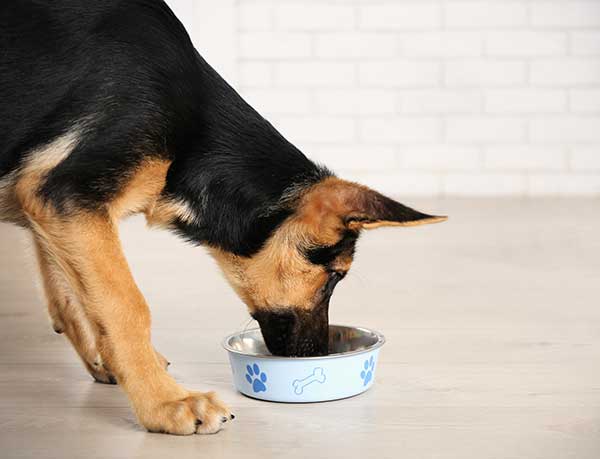
Checkout Our Favorite Dog Products
1. BEST PUPPY TOY
We Like: Snuggle Behavior Toy with Heart Beat & Heat Pack – Ideal toy for new puppies.
2. BEST DOG TRAINING PROGRAM
We Like: Doggy Dan The Online Dog Trainer – Stop any dog problem and raise the perfect puppy with The Online Dog Trainer.
3. Best Multivitamin for Dogs
We Like: PetHonesty 10-For-1 Multivitamin – 10 Benefits in 1 Daily Treat – These Multivitamin Snacks combine a well-rounded blend of the most essential vitamins and supplements including glucosamine, probiotics, vitamins and omegas, for dogs’ overall daily health.
4. BEST DOG DNA TEST
We Like: Embark Dog DNA Test – Embark screens for over 250 dog breeds + tests for 170+ genetic diseases including MDR1 drug sensitivity, glaucoma, degenerative myelopathy, and dilated cardiomyopathy, some of the most common adult-onset diseases in dogs.
5. BEST DOG PUZZLE TOY
We Like: Outward Hound Interactive Puzzle Toy – Every dog loves chasing squirrels at the park. The Outward Hound Hide-a-Squirrel Puzzle Toy gives your dog the same feeling as though he was outdoors chasing live squirrels.





